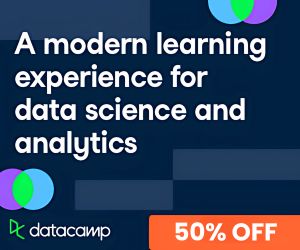In today's rapidly evolving educational landscape, artificial intelligence (AI) is revolutionizing how we approach self-paced learning. These innovative tools empower learners with personalized, efficient, and scalable educational experiences that adapt to individual needs and learning styles. This comprehensive guide explores the most effective AI tools for self-paced learning, their benefits, real-world applications, and the transformative impact they're having on education and professional development.
How AI is Revolutionizing Self-Paced Learning

Photo by Steve Johnson on Unsplash
Self-paced learning has long offered flexibility but often lacked personalization and real-time guidance. AI tools are addressing these limitations by creating dynamic, responsive learning environments that adapt to individual learners. These technologies analyze learning patterns, identify knowledge gaps, and deliver customized content at the optimal difficulty level—all while automating administrative tasks that traditionally consumed educators' time [1].
The integration of AI into learning platforms represents a paradigm shift from one-size-fits-all education to truly personalized learning journeys. As these technologies continue to evolve, they're reshaping how knowledge is delivered, assessed, and retained across educational institutions and corporate training programs.
Key Benefits of AI-Powered Self-Paced Learning

Photo by George Becker on Pexels
Personalization at Scale
AI systems analyze individual learning patterns to create tailored educational experiences. Platforms like Cornerstone Skills Graph match learner skills to roles and training content using a comprehensive dataset of 50,000+ skills, enabling hyper-personalized learning journeys that adapt to each user's unique needs and goals.
This level of personalization was previously impossible at scale, requiring prohibitive amounts of human resources. AI makes it accessible to organizations of all sizes, democratizing access to customized education.
Dramatic Time Savings
One of the most significant advantages of AI tools is their ability to automate time-consuming tasks. LearnExperts AI automates instructional design processes, reducing course creation time by up to 98%. This efficiency allows educators and instructional designers to focus on high-value activities like mentorship and curriculum innovation.
Similarly, tools like CourseAI generate comprehensive course outlines, scripts, and marketing copy in minutes, enabling rapid deployment of educational content across multiple platforms.
Intelligent Assessment and Feedback
Traditional assessment methods often provide delayed feedback and limited insights. AI-powered tools like LearnUpon leverage OpenAI's GPT API to automatically generate quiz questions and answers from training materials, while platforms like Shiken.ai offer adaptive quizzes that adjust difficulty based on learner performance.
These intelligent assessment systems provide immediate feedback, helping learners identify and address misconceptions before they become entrenched. The result is a more effective learning process with fewer knowledge gaps.
Skill Gap Identification and Targeted Development
AI analytics can identify skill gaps at both individual and organizational levels. CYPHER Copilot not only generates multilingual courses and assessments but also includes tools to identify skill gaps and recommend targeted learning interventions.
This capability is particularly valuable in corporate environments, where rapidly evolving skill requirements demand agile, data-driven approaches to professional development.
Leading AI Tools for Self-Paced Learning

Photo by Ilze Lucero on Unsplash
Content Creation and Instructional Design
1. LearnExperts AI
This powerful tool automates instructional design tasks, dramatically reducing course creation time. It supports various formats including eLearning, webinars, and knowledge bases, making it versatile for different educational contexts.
2. CourseAI
Specializing in online course production, CourseAI generates comprehensive course outlines, scripts, and marketing materials. It's particularly valuable for educators looking to scale their online offerings without sacrificing quality.
3. SummarAIze
This innovative tool converts audio and video content into concise summaries, social posts, and descriptions. It enables educators to repurpose existing materials efficiently, extending the reach and impact of valuable content.
Personalized Learning Platforms
1. Cornerstone Skills Graph
This sophisticated platform matches learner skills to roles and training content using a comprehensive dataset of over 50,000 skills. It creates hyper-personalized learning journeys that align with both individual goals and organizational needs.
2. 360Learning
Integrating AI throughout the learning experience, 360Learning automates course recommendations, skill gap analysis, and adaptive learning paths. Its collaborative features foster peer learning while maintaining personalization.
3. Docebo
Leveraging AI for content curation and skill mapping, Docebo delivers personalized learning experiences at scale. Its analytics capabilities provide valuable insights into learning effectiveness and engagement.
Assessment and Reinforcement
1. LearnUpon
Using OpenAI's GPT API, LearnUpon automatically generates quiz questions and answers from training materials. This streamlines assessment creation while ensuring alignment with learning objectives.
2. Shiken.ai
Specializing in AI-driven practice tests and adaptive quizzes, Shiken.ai reinforces knowledge retention through intelligent assessment. Its adaptive algorithms adjust question difficulty based on learner performance.
3. WorkRamp's AI Assist
This tool simplifies creating microlearning content and editing training materials directly within the platform. Its assessment features provide immediate feedback to learners, enhancing knowledge retention.
Real-World Impact: Case Studies and Success Stories

Stanford University's AI Intervention in Ugandan Classrooms
Stanford researchers developed an AI program that analyzed data from 1,170 Ugandan students using tablets for English literacy. The system predicted “wheel-spinning” (unproductive struggle) with 80% accuracy and provided timely interventions, such as targeted exercises or video tutorials.
This approach reduced frustration and improved learning efficiency, demonstrating AI's ability to preemptively address challenges in self-paced environments, particularly in resource-constrained settings.
New Town High School's Maths Pathway Platform
Facing large STEM classes, this school implemented an AI-driven adaptive learning tool that tailored math modules to individual learning speeds and provided real-time performance tracking for teachers. The result was higher test scores and improved student engagement.
Teachers reported a better ability to address learning gaps, highlighting AI's role as a “force multiplier” in educational settings with limited resources.
Knewton's Adaptive Learning Program
An analysis of Knewton's AI-powered adaptive learning platform showed a 62% increase in test scores compared to traditional methods. The system's personalized feedback loops continuously adjusted content difficulty based on learner performance, optimizing learning trajectories in self-directed study environments.
This dramatic improvement in outcomes underscores the potential of AI to transform educational effectiveness through personalization and adaptive content delivery.
Intelligent Tutoring Systems for Mathematics
A study of fifth-grade students using AI tutors for multiplication and division lessons achieved remarkable results: a 30% grade improvement, 20% reduction in anxiety, and increased intrinsic motivation through gamified problem-solving.
The system's instant feedback and progress visualization proved particularly effective, demonstrating how AI can address both cognitive and affective aspects of learning.
Implementation Strategies for Educators and Organizations

Starting Small with Focused Applications
Rather than attempting a complete overhaul of existing systems, organizations often find success by implementing AI tools in specific high-impact areas. For example, using AI for quiz generation or content summarization provides immediate benefits while allowing teams to become familiar with the technology.
This approach minimizes disruption while demonstrating value, creating momentum for broader implementation.
Integrating with Existing Learning Management Systems
Many AI tools are designed to integrate with popular learning management systems (LMS), allowing organizations to enhance their current infrastructure rather than replacing it. Platforms like Absorb LMS incorporate AI features while maintaining compatibility with existing content and workflows.
This integration strategy reduces implementation barriers and leverages previous investments in educational technology.
Providing Training and Support for Educators
The successful implementation of AI tools requires adequate training and support for educators and instructional designers. Organizations should invest in professional development that helps staff understand how to effectively leverage AI while maintaining pedagogical quality.
This human-centered approach ensures that AI serves as an enhancement to, rather than a replacement for, skilled educational professionals.
Measuring Impact and Refining Approaches
Implementing AI tools should include robust measurement of learning outcomes and user experience. Organizations should establish clear metrics for success and regularly evaluate the impact of AI implementations, refining their approach based on data and feedback.
This iterative process ensures continuous improvement and alignment with educational goals.
Future Trends in AI for Self-Paced Learning

Photo by cottonbro studio on Pexels
Multimodal Learning Experiences
Emerging AI tools are increasingly capable of creating and analyzing multimodal content—combining text, audio, video, and interactive elements. This trend will enable more engaging and effective learning experiences that cater to diverse learning preferences.
As these capabilities mature, we can expect self-paced learning to become more immersive and engaging, addressing one of the traditional limitations of distance education.
Increased Accessibility and Inclusion
AI tools are improving accessibility through features like automatic transcription, translation, and content adaptation for learners with disabilities. This trend will continue, making self-paced learning more inclusive and equitable.
These advancements align with broader educational goals of increasing access and supporting diverse learner populations.
Integration with Extended Reality (XR)
The combination of AI with virtual and augmented reality technologies is creating new possibilities for immersive, experiential learning. These integrated solutions will enable practice-based learning in safe, controlled environments—particularly valuable for fields like healthcare, engineering, and emergency response.
This convergence of technologies promises to address one of the persistent challenges of self-paced learning: providing authentic practical experience.
Ethical AI and Learner Privacy
As AI becomes more prevalent in education, ethical considerations around data privacy, algorithmic bias, and learner autonomy will gain prominence. Future developments will likely include more transparent AI systems with stronger privacy protections and bias mitigation.
This focus on ethical implementation will be essential for maintaining trust and ensuring that AI tools serve the best interests of learners.
Challenges and Considerations

Photo by Vitolda Klein on Unsplash
Balancing Automation and Human Connection
While AI excels at personalization and efficiency, maintaining meaningful human connection remains essential for effective learning. Organizations must thoughtfully balance automation with opportunities for human interaction, mentorship, and community building.
This balanced approach ensures that technological efficiency doesn't come at the cost of the social and emotional aspects of learning.
Addressing Digital Divides
Access to AI-powered learning tools is not evenly distributed, potentially exacerbating existing educational inequalities. Organizations and policymakers must work to ensure that these powerful tools reach underserved communities and institutions with limited resources.
Initiatives that provide technology access, training, and support to disadvantaged communities will be crucial for realizing the democratizing potential of AI in education.
Ensuring Quality and Accuracy
AI-generated content requires careful review to ensure accuracy, relevance, and alignment with learning objectives. Organizations should implement quality control processes that combine AI efficiency with human expertise.
This hybrid approach leverages the strengths of both AI and human educators, ensuring high-quality educational experiences.
Supporting Educator Adaptation
The integration of AI tools represents a significant change for many educators. Organizations should provide comprehensive support, including training, resources, and communities of practice, to help educators adapt to and thrive in this evolving landscape.
This support acknowledges the central role of educators in successful implementation and helps address concerns about technological displacement.
Conclusion
AI tools for self-paced learning are transforming education by delivering personalized, efficient, and scalable learning experiences. From content creation and skill mapping to adaptive assessment and targeted interventions, these technologies are addressing longstanding challenges in education and professional development.
The case studies and success stories highlighted in this article demonstrate the tangible impact of AI on learning outcomes, with improvements in test scores, engagement, and skill development across diverse contexts. As these tools continue to evolve, they promise to make high-quality, personalized education more accessible than ever before.
For educators, instructional designers, and organizational leaders, the message is clear: AI tools for self-paced learning are not just futuristic possibilities but present-day solutions with demonstrated effectiveness. By thoughtfully implementing these technologies with attention to pedagogical quality, human connection, and ethical considerations, organizations can harness their transformative potential while avoiding potential pitfalls.
The future of self-paced learning is personalized, adaptive, and intelligent—and that future is already here.
References
[1] 360Learning Blog on AI Learning Platforms
[2] Google AI for Educators
[3] Arizona State University AI Learning
[4] YouTube Video on AI in Education
[5] Intellum Blog on AI Tools for Education
[6] Axon Park Case Studies on AI in Education
[7] Digital Defynd AI in Schools Case Studies
[8] GWU Paper on Optimizing AI in Education
[9] Hyperspace Case Studies on AI in Enterprise Learning
[10] Faculty Focus on AI-Generated Case Studies
Useful Links
Links

Photo by Kendall Hoopes on Pexels







